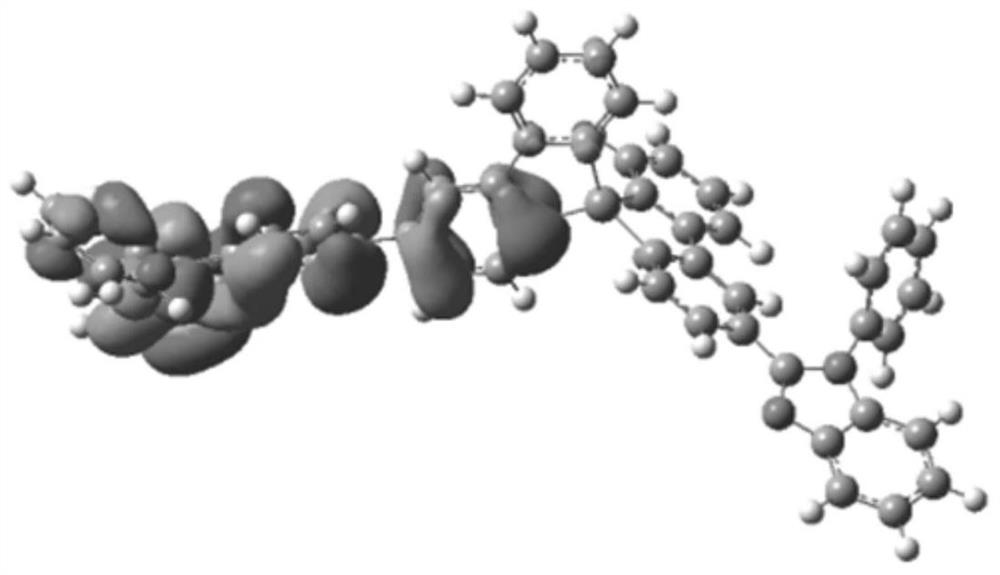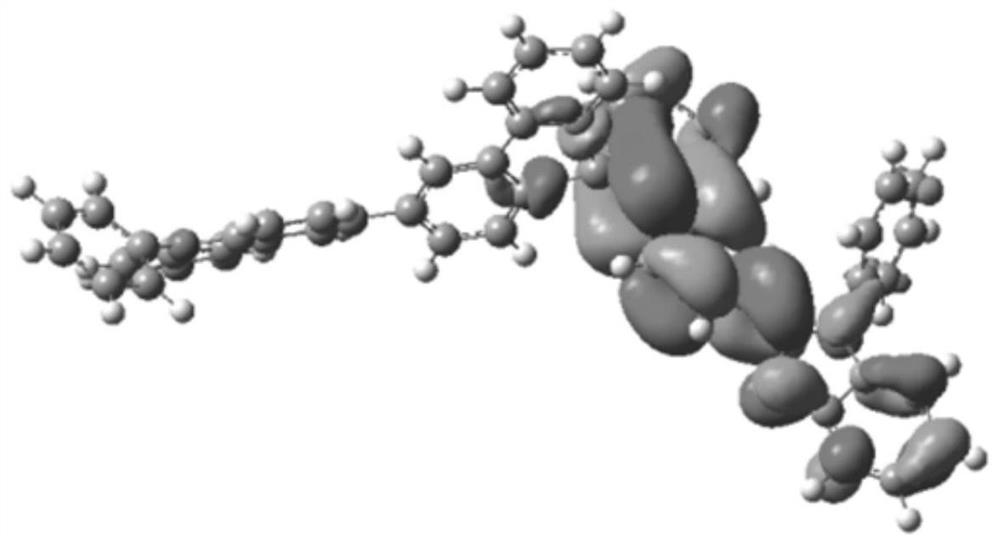Compound, display panel and display device
A display panel and compound technology, which is applied in the directions of silicon organic compounds, compounds of elements of Group 5/15 of the periodic table, compounds of elements of Group 4/14 of the periodic table, etc., can solve the problem of difficulty in developing doping materials, etc. To achieve the effect of improving equilibrium migration, EQE), lifetime improvement, and macromolecular density
- Summary
- Abstract
- Description
- Claims
- Application Information
AI Technical Summary
Problems solved by technology
Method used
Image
Examples
Embodiment 1
[0074] Synthesis of Compound H015
[0075]
[0076] In a 250ml round bottom flask, combine 3,3'-dibromo-spirofluorene silicon (15mmol), 3-boronate-9-phenyl-carbazole (15mmol) and Pd(PPh 3 ) 4 (0.3 mmol) was added to a mixture of toluene (30 mL) / ethanol (20 mL) and aqueous potassium carbonate (12 mmol) (10 mL) under N 2 Refluxed under atmosphere for 48 hours, the resulting intermediate was cooled to room temperature, added to water, then filtered through a pad of celite, extracted with dichloromethane, washed with water, dried over anhydrous magnesium sulfate, filtered and evaporated with The crude product was purified by silica gel column chromatography to obtain the intermediate product H015-1.
[0077] In a 250ml round bottom flask, the intermediate H015-1 (15mmol) and potassium acetate (40mmol) were mixed with dry 1,4-dioxane (60mL), Pd(PPh 3 ) 2 Cl 2 (0.4 mmol) and pinacol diboronate (25 mmol) were mixed and stirred at 90°C under nitrogen atmosphere for 48 hours. ...
Embodiment 2
[0081] Synthesis of Compound H020
[0082]
[0083] In a 250ml round bottom flask, combine 3,3'-dibromo-spirofluorene silicon (15mmol), 1-boronate-triphenylamine (15mmol) and Pd(PPh 3 ) 4 (0.3 mmol) was added to a mixture of toluene (30 mL) / ethanol (20 mL) and aqueous potassium carbonate (12 mmol) (10 mL) under N 2 Refluxed under atmosphere for 48 hours, the obtained intermediate was cooled to room temperature, added to water, then filtered through a pad of celite, extracted with dichloromethane, washed with water, dried over anhydrous magnesium sulfate, filtered and evaporated with The crude product was purified by silica gel column chromatography to obtain the intermediate product H020-1.
[0084] In a 250ml round-bottomed flask, combine the intermediate H020-1 (15mmol) and potassium acetate (40mmol) with dry 1,4-dioxane (60mL), Pd(PPh) 3 ) 2 Cl 2 (0.4 mmol) and pinacol diboronate (25 mmol) were mixed and stirred at 90°C under nitrogen atmosphere for 48 hours. The o...
Embodiment 3
[0088] Synthesis of Compound H036
[0089]
[0090] In a 250ml round bottom flask, combine 3,3'-dibromo-spirofluorene silicon (15mmol), copper iodide (15mmol), potassium tert-butoxide (65mmol), 1,2-diaminocyclohexane (12mmol) and 9H-carbazole (25 mmol) were added to dry 1,4-dioxane (400 mL) under N 2 Refluxed under atmosphere for 48 hours, the obtained intermediate was cooled to room temperature, added to water, then filtered through a pad of celite, extracted with dichloromethane, washed with water, dried over anhydrous magnesium sulfate, filtered and evaporated with The crude product was purified by silica gel column chromatography to obtain the intermediate product H036-1.
[0091] In a 250ml round bottom flask, the intermediate H036-1 (15mmol) and potassium acetate (40mmol) were mixed with dry 1,4-dioxane (60mL), Pd(PPh 3 ) 2 Cl 2 (0.4 mmol) and pinacol diboronate (25 mmol) were mixed and stirred at 90°C under nitrogen atmosphere for 48 hours. The obtained intermed...
PUM
| Property | Measurement | Unit |
|---|---|---|
| thickness | aaaaa | aaaaa |
| thickness | aaaaa | aaaaa |
| thickness | aaaaa | aaaaa |
Abstract
Description
Claims
Application Information
 Login to View More
Login to View More - R&D
- Intellectual Property
- Life Sciences
- Materials
- Tech Scout
- Unparalleled Data Quality
- Higher Quality Content
- 60% Fewer Hallucinations
Browse by: Latest US Patents, China's latest patents, Technical Efficacy Thesaurus, Application Domain, Technology Topic, Popular Technical Reports.
© 2025 PatSnap. All rights reserved.Legal|Privacy policy|Modern Slavery Act Transparency Statement|Sitemap|About US| Contact US: help@patsnap.com



